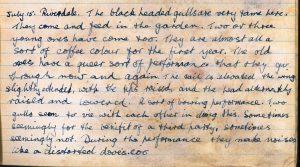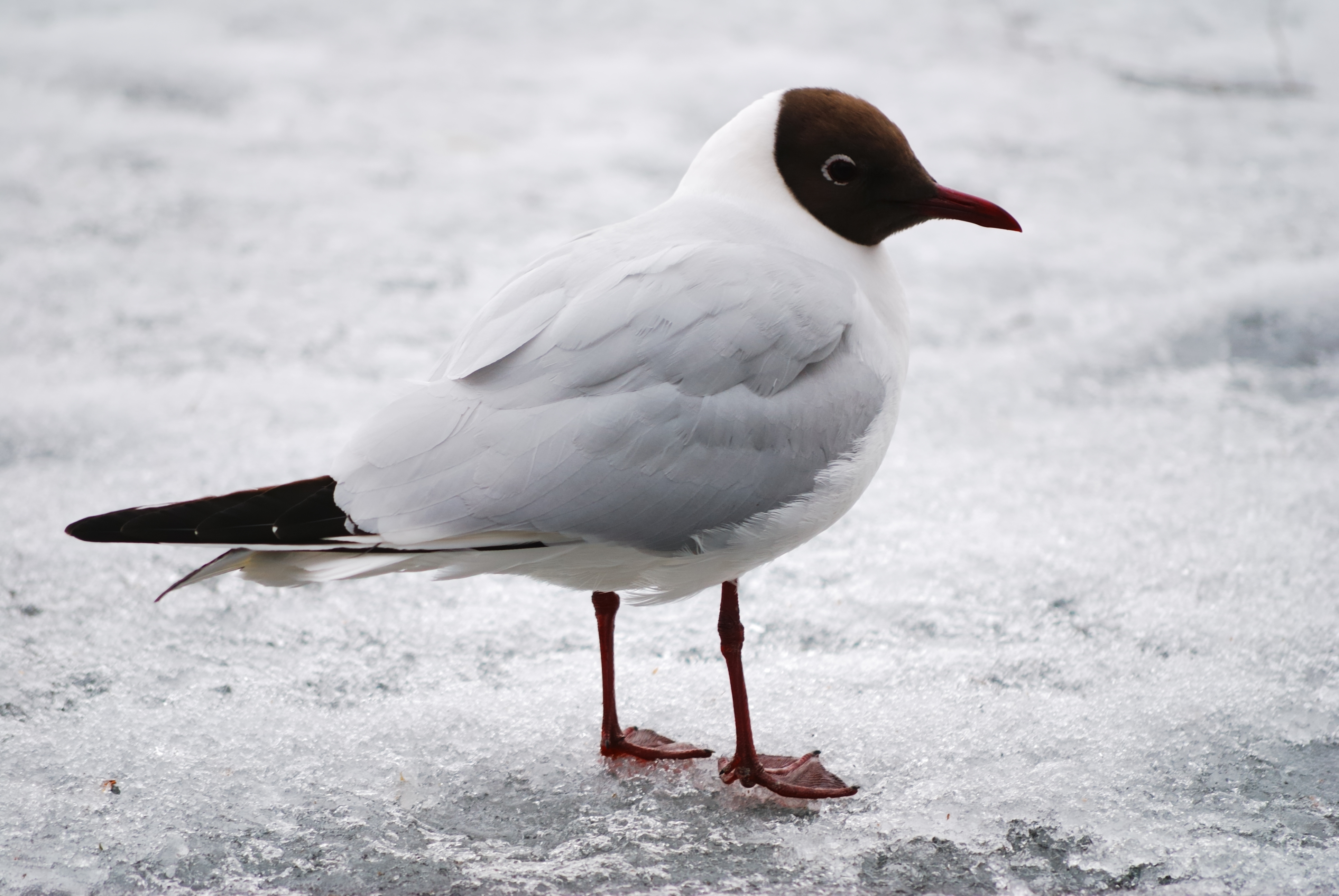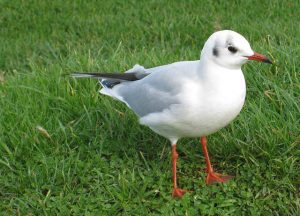Black-headed gulls are one of the easiest gulls to identify. As Viola notes, their heads are not really black but are instead a ‘coffee colour’. This distinctive feature only occurs during the breeding season. When winter arrives, their heads will return to being white with a small smudge behind the eye.
Black-headed gulls are now very much urban gulls. They have a wide diet that consists of insects, earthworms, plant material and our rubbish and leftovers.
The gulls are a lot smaller than the lesser black-backed and herring gulls which you may also see in your garden. They are very sociable and have a distinctive “kree-ar” call.
Transcript
July 15. Riverdale. The black headed gulls are very tame here.
They come and feed in the garden. Two or three
young ones have come too. They are almost all a
sort of coffee colour for the first year. The old
ones have a queer sort of performance that they go
through now and again. The tail is elevated, the wings
slightly extended, with the tips raised, and the head alternately
raised and lowered. A sort of bowing performance. Two
gulls seem to vie with each other in doing this. Sometimes
seemingly for the benefit of a third party, sometimes
seemingly not. During the performance they make noises
like a distorted dove’s coo.


